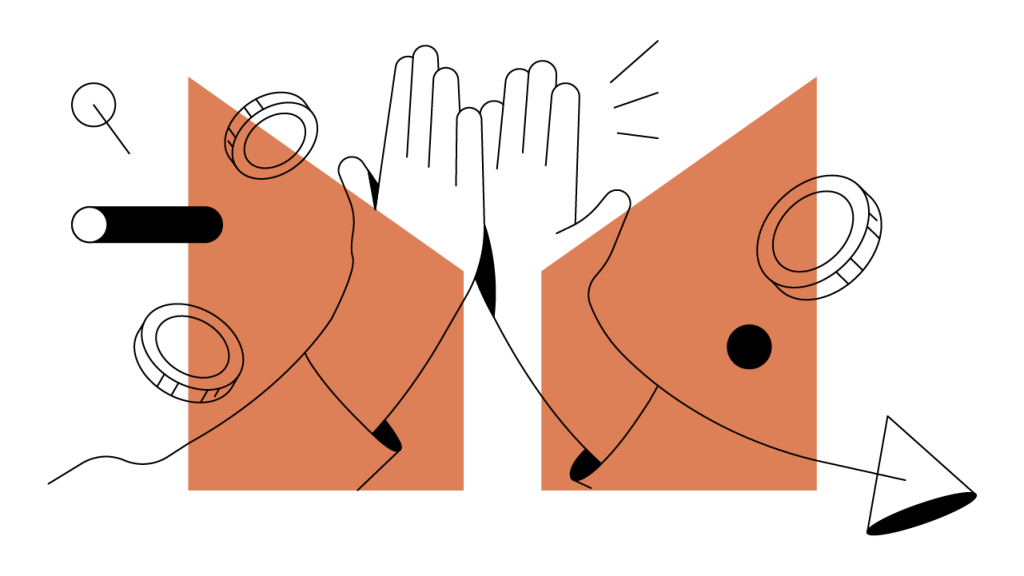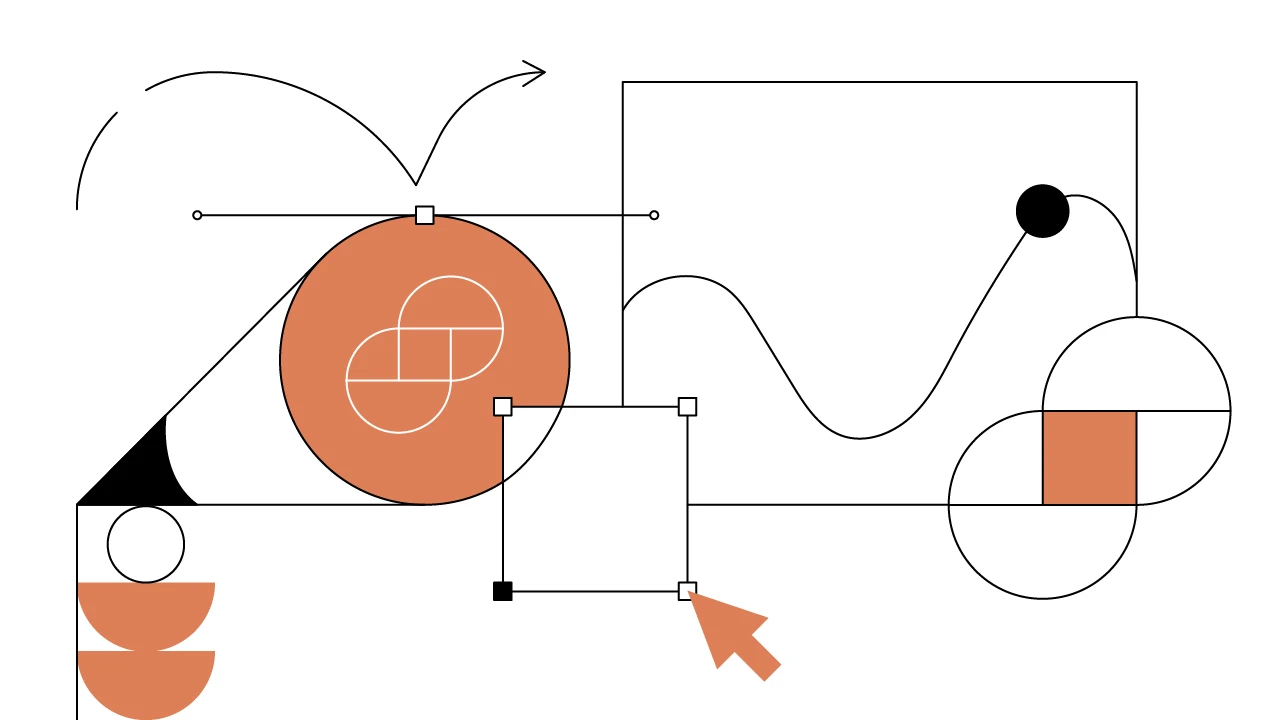Contents
What Is MakerDAO?
Read how MakerDAO’s components — Dai, Maker collateral vaults, oracles, and the MKR token — work together to send this DeFi platform to greater heights.
Updated March 20, 2025 • 4 min read

Summary
MakerDAO is an Ethereum-based protocol that issues the Dai stablecoin and facilitates collateral-backed loans without an intermediary. Its widespread use and DeFi integration make MakerDAO one of the most operational protocols in the crypto ecosystem. A subsequent article in our collection explores the role MakerDAO’s Dai has played a pioneering role in fueling the rapid adoption of decentralized finance.
Dai: Not the Only Stablecoin, but the Most Ubiquitous
Stablecoins are cryptocurrencies pegged to the value of stable assets, usually fiat currencies, as a means of avoiding price volatility. MakerDAO’s Dai, for example, is soft-pegged to the U.S. dollar.
Dai’s stable value makes it an ideal cryptocurrency with which to issue loans, send remittances, and hedge against the risks that accompany crypto’s sometimes volatile markets. MakerDAO and Dai also play a crucial role in decentralized finance (DeFi), providing a composable platform that can easily be built upon by DeFi developers, in addition to providing liquidity and a stable unit of account for DeFi applications. Launched in 2017, MakerDAO was one of the earliest DeFi protocols and the first Ethereum project to issue loans.
Unlock the future of money on Gemini
Start your crypto journey in minutes on the trusted crypto-native finance platform
Dai isn’t the only stablecoin available in the crypto ecosystem. Crypto exchanges like Gemini, Coinbase, and Bitfinex have all launched their own stablecoins — GUSD, USDC, and USDT (Tether), respectively — each of which is backed by the U.S. dollar. Likewise, projects such as Ampleforth have launched stablecoins (AMPL) that algorithmically adjust their supply to maintain a stable value.
MakerDAO’s model differs from other stablecoins because it is both decentralized — as in, no one controls the issuance of Dai — and uses collateral in the form of Ethereum-based assets to maintain its peg to the U.S. dollar. MakerDAO is also governed in a decentralized manner by the holders of its MKR token through a decentralized autonomous organization (DAO).
So how does MakerDAO work? The platform has several key components: Dai, Maker collateral vaults, oracles, and the MKR token.
Dai Stablecoins and Maker Collateral Vaults
Dai is an ERC-20 token that can be purchased from centralized exchanges like Gemini, Coinbase, and Binance, and decentralized exchanges (DEXs) like Uniswap, Curve, and 0x. You can also generate Dai when you open a Maker collateral vault via MakerDAO’s Oasis Borrow dashboard and deposit collateral. These vaults, previously referred to as collateralized debt positions (CDPs), are smart contracts that run on the Ethereum blockchain and hold collateral in escrow until the borrowed Dai has been returned. The value of your collateral must exceed the value of the Dai you are issued. While this might seem like a disadvantage, the benefit of locking up collateral is that you can put in riskier assets and receive a stable asset in return.
To transact a Dai stablecoin loan through MakerDAO, you can deposit any Ethereum-based asset as collateral as long as it has been approved by the MKR holders who govern MakerDAO. Examples of approved collateral include ETH, ZRX, and OMG, among many others. Once borrowed, Dai is one of the most integrated digital assets in all of blockchain. In particular, it is utilized around the decentralized finance (DeFi) ecosystem, and in the growing sector of blockchain-based gaming and collectibles.
A dai interest rate can be earned by depositing it into the Dai Savings Rate (DSR), which is funded by the fees charged on Maker collateral vault owners and free to every Dai holder. The DSR does not require you to give up control of funds, and you can withdraw your Dai at any time. The Dai Savings Rate is determined by MKR holders based on market conditions, but has ranged from 0% to 8.75%. If you want to withdraw the collateral you locked in the Maker collateral vault, you must repay the Dai you borrowed, in addition to an annual percentage yield fee.
MakerDAO’s Risk and Collateral Mechanisms
Through the DAO, MKR token holders assign risk parameters to each collateral asset that outline the amount of debt that can be created by that collateral type, the amount of volatility the asset is expected to experience, and what happens if the collateral must be liquidated in the event that it no longer covers the amount of outstanding debt (Dai) borrowed against it.
In the event that there is market volatility and the collateral deposited no longer covers the outstanding debt, the collateral will be liquidated via an automated process. Automated market actors who take advantage of arbitrage opportunities — called Keepers — bid in Dai for the collateral from a liquidated vault. This Dai is subsequently used to repay the vault’s debt and a liquidation penalty fee. If enough Dai is received from the collateral auction to cover both the debt repayment and the penalty fee, the leftover collateral will be returned to you as the vault owner.
If the auction fails to garner enough Dai to repay your vault’s debt, the debt becomes “protocol debt” and is covered by the Maker Buffer, a pool that contains the fees (denominated in Dai) paid on collateral withdrawals in addition to the proceeds from the collateral auction. If there is an insufficient amount of Dai in the Maker Buffer, a debt auction will be triggered and the protocol will mint MKR and sell it to bidders for Dai to recapitalize the system.
Oracles Chosen by MKR Voters
In order to assess the collateral deposited on the platform, MakerDAO must have information on the prices of collateral assets. This is provided by a decentralized network of trusted oracles selected by MKR voters. However, for security reasons, the protocol does not receive price information from the oracles directly. Instead, it receives the information through the Oracle Security Module (OSM), a smart contract that delays the communication of prices for one hour.
This delay function allows emergency oracles — special oracles that are also selected by MKR voters — to freeze the original oracle providing the price feed if it is corrupt or compromised. Emergency oracles can also trigger emergency shutdowns, a mechanism used to update the MakerDAO system or to protect the MakerDAO protocol from attacks.
MKR Tokens and Governance
To vote on changes to the MakerDAO protocol, you must hold the MKR governance token. However, anyone with an Ethereum address — regardless of whether they hold MKR tokens or not — can submit a proposal to change the protocol. Examples of issues that MKR holders can vote on include adding new assets as collateral, altering the risk parameters of existing collateral loans, and choosing price oracles and emergency oracles. MKR voters can also trigger emergency shutdowns.
MakerDAO offers a decentralized, permissionless, and stable store of value that has become an essential part of the DeFi ecosystem. The dai stablecoin has been integrated into hundreds of applications and services and enables you to do everything from sending remittances to hedging against the risks of the crypto markets. MakerDAO and Dai are essential aspects of DeFi composability, and have played a central role in the remarkable growth of the sector.
Cryptopedia does not guarantee the reliability of the Site content and shall not be held liable for any errors, omissions, or inaccuracies. The opinions and views expressed in any Cryptopedia article are solely those of the author(s) and do not reflect the opinions of Gemini or its management. The information provided on the Site is for informational purposes only, and it does not constitute an endorsement of any of the products and services discussed or investment, financial, or trading advice. A qualified professional should be consulted prior to making financial decisions. Please visit our Cryptopedia Site Policy to learn more.

Is this article helpful?


